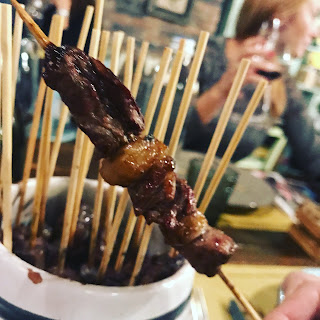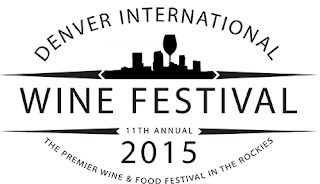Touring & Tasting Tips


Touring & Tasting Tips
1.PLAN BEFORE YOU GO.
Many of the world's famed wine regions contain dozens of wineries, from vast multi-national conglomerates to virtual garage operations. Most are clustered as tightly as old vine Zinfandel grapes along the main artery, though several sprout on scenic, corkscrewing country roads. Traffic, especially during harvest (autumn, or spring in the Southern Hemisphere) and summer, can be heavy. To maximize your time, avoid mid- and late-afternoon visits, especially on weekends. Winery staffers are usually more attentive weekdays, and you might even luck into meeting the winemaker at smaller operations.
Allot at least one hour for a full-scale tour and tasting and factor in travel time between wineries. Complex ordinances require some establishments to open by appointment only (a few, such as Bordeaux châteaux, lower the drawbridge only after you've planned a rendezvous like fugitive lovers and whistle-blowers). Always call ahead to double-check hours and reservations, even at the largest facilities.
Many establishments charge for tastings (the fee may be refunded with a purchase), extra for reserve and older library wines or special tours. Speaking of tours, trust us: once you've seen one crusher, pump, fermentation tank, and cellar, you get the idea, so after you've mastered the basics, seek out wineries offering something unique, whether historic or technological.
2. PACE YOURSELF.
Don't drink all the wine. Sip & spit. Many wineries boast lovely grounds and encourage you to bring along your own picnic. If you do decide to eat and imbibe, stay in the shade during hot months. Drink plenty of water.
3. HOLD YOUR GLASS BY THE STEM.
Fondling the bowl of the glass like a melon at the supermarket brings out Simon Cowell snippiness in snobs. Why? Because it warms the wine, altering its character. Wines are rarely excessively chilled in tasting rooms, but if they are, yes, palm them as if rubbing your hands by the fire before inhaling and sipping.
Hold the wine up to the light or against a white background. This enables you to determine the robe (color), legs (glycerine viscosity) and clarity (cloudiness can be a first hint of spoilage). Sampling library wines? Browning at the edges is expected in a mature red, as is a certain darkening of older whites. As the great Bordeaux oenologist Emile Peynaud wrote, "Color resembles a wine's face: from it you can tell age and something of its character."
4. SNIFF, SWIRL, SNIFF AGAIN.
Wine DNA contains five strands: aroma, body, flavor, acidity, finish. Sometimes, oak and tannin may be thrown into the gene pool.
Smelling the wine is crucial: our appreciation of wine in the glass stems primarily from our olfactory sense. You'll discover that not all wines have "pretty" scents and flavors. Vegetal, mineral, smoke, tar, petrol, damp leaves, leather and cigar box, for example, can be complimentary characteristics, depending on the varietal. An educated wine drinker appreciates these qualities (though you're allowed to play favorites!).
The first whiff identifies the core aromatics. Now swirl the glass. This releases its "bouquet" or "nose." You'll discover an even more complex set of notes emerging. It's like playing a great symphony first with piano solo, then with full orchestra.
5. SIP, SWISH, SPIT.
Take your first sip, just enough to slosh around your mouth, then spit. Seems undignified, doesn't it? But treating the wine like mouthwash (pre-gargling) is vital. We have several sets of taste buds that recognize different characteristics: sweetness (the tip of the tongue, and first to register), sourness, saltiness and bitterness. You'll also better appreciate the body, or texture: is it voluptuous as Pamela Anderson, thin, or flabby? Remember, there's no such thing as bodybuilding or liposuction for wine. You can then gauge the acidity. If your mouth puckers like a hormonal adolescent at the prom, the wine may be imbalanced. Finally, do the flavors linger like a first kiss or do they, um, peter out? Well-made wines usually have a finish, from subtle to explosive.
6. TRY SOMETHING DIFFERENT.
Do you love Chardonnay? Absolutely, sample it. But the winery may produce several styles, from stainless steel to barrel-fermented (oaked), in varying combinations and blends. Then try something new. Ask for similar varietals (Pinot Blanc, for example, is often---unjustly---called the poor man's Chard). Then expand your horizons: Viognier, Sauvignon Blanc, Riesling, Gewürtztraminer, Pinot Gris/Grigio, etc. Do the same with reds. You adore Merlot (and vice versa)? Next sample a Bordeaux-style blend, before sequeing into the heavier Cabernets.
7. START WITH WHITES.
The winery folks will encourage you to try whites, then reds. And they'll pour the lighter wines first. This makes it easier to recognize the subtle differences---and prevents "palate shock," when a big brawny red assaults your taste buds.
8. TAKE IT SLOWLY.
Taste every wine in small quantities and, if possible, spit and/or pour most of it out. Even experts suffer palate fatigue after 15 wines (the alcohol seeps into your taste buds even if you don't swallow, eventually numbing them). Drink plenty of water, and sip some between each wine. Nibble non-salty crackers: it's like a cleansing sorbet between courses. Some wineries will even put out cheese cubes, since so many wines are enhanced by food (and vice versa).
9. PURCHASE WINE FOR HOME CONSUMPTION.
Find something you enjoy? There's no better way to savor wine than relaxing at home with a meal. Wineries offer discounts for quantity purchases. Note that many wines---from playful experimental blends to serious single-estate wines---are available only at the winery's gift shop (often along with an astonishing array of logo merchandise, cookbooks, stemware, accessories and gourmet food items). Always check if the state has reciprocity with your state for alcohol shipping; if not, settle for portable potables. If you love a winery, consider joining its (usually free) wine club: you'll receive newsletters, discounts, special event invitations, even releases unavailable to regular consumers.
10. BE FEARLESS.
The worst that can happen is you really want to spit that wine out। Above all, don't be afraid to ask questions. Enjoy!!!!



Comments